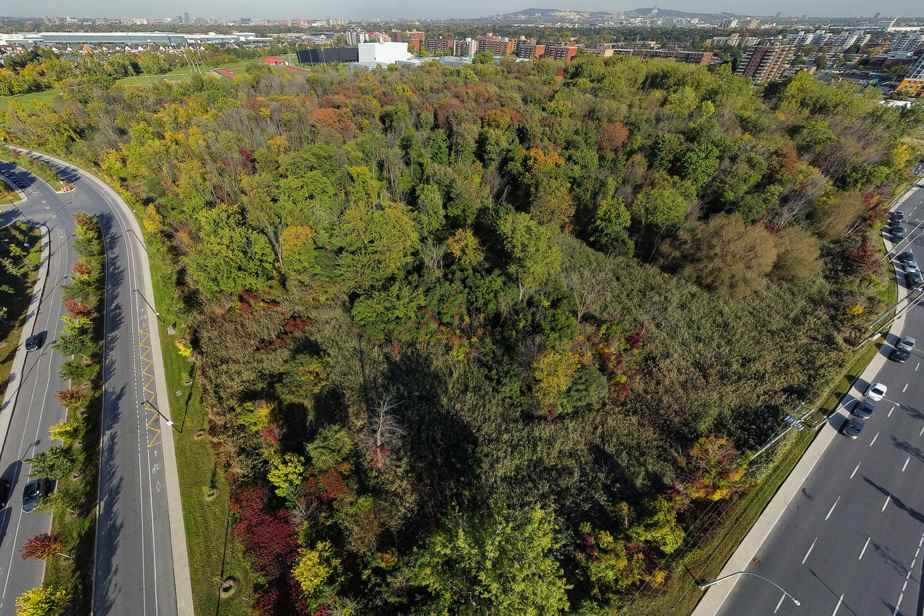Posted at 12:00 a.m.
Catering is expensive
One of the rare wetland restoration or creation projects authorized by the Ministry of the Environment and the Fight against Climate Change (MELCC) will be carried out in Montreal at a cost of $1 million. This should make it possible to restore an area of 22,000 m2 in the wooded park Marcel-Laurin, in the borough of Saint-Laurent. Last July, the City hired a research officer specializing in ecological restoration for a three-year term. According to Marc-Olivier Fritsch, of the Montreal communications department, the City is currently preparing a call for tenders to select a specialized firm that would carry out the work by 2025. It should be noted that to date, only 2.6% of the 92 .5 million dollars raised by the Government of Quebec have been allocated to projects to restore or create wetlands.

PHOTO HUGO-SÉBASTIEN AUBERT, THE PRESS
Boisé du parc Marcel-Laurin, in the borough of Saint-Laurent
Stop the destruction
According to lawyer Jean-François Girard, who specializes in environmental law, “the real approach would be to stop destroying wetlands”. According to him, Quebec risks finding itself in a situation “where it will be worse” in a few years. An opinion shared by biologist Kim Marineau, who has more than 30 years of experience. “Before recreating wetlands, you have to protect the ones you have,” she pleads. The situation is particularly critical in Montérégie, she specifies. Wetlands, especially peatlands, are also carbon and methane sinks. GHGs are released when these environments are destroyed or disturbed. A study published in 2021 in the journal Science Advances calculated that the destruction of intact wetlands in Canada could release 15 million tonnes of GHGs into the atmosphere.
It takes a plan
“You need to have an overview of this issue,” says André Bélanger, Executive Director of the Rivières Foundation. You can’t just give future generations problems to solve. He suggests that Quebec take inspiration from the Species at Risk Act at the federal level, which provides for a classification of threatened species. The MELCC could thus designate the wetlands that absolutely must be protected, for which there is no possible compensation. According to him, destroying wetlands in exchange for compensation is a kind of “bottomless hole” that will not achieve the objective of no net loss. “The government should also set binding targets. The Ontario government, for example, has set a goal of halting the net loss of wetlands in areas where losses are greatest by 2025. Ontario’s strategy also plans to make gains by 2030, again in the most affected regions.
A ball carrier
Biologist Kim Marineau believes that a body should be set up whose mission will be to set objectives and measure progress. “It will also take long-term monitoring [des nouveaux milieux humides] and an interview, otherwise all these efforts will have been for naught. According to her, the government can only wait for organizations or municipalities to show their interest in creating new wetlands. Especially since the costs are likely to be much higher than the sums collected in financial compensation, she believes. She specifies that the new law and its compensation scheme have not really curbed the destruction of these natural environments. “Nothing has really changed in the minds of the promoters. The only difference is that now they ask how much it will cost [pour détruire des milieux humides]. »
Amend the Farmland Protection Act
“It’s a land use planning issue,” says Sébastien Rioux, Quebec director of Ducks Unlimited, an organization that specializes in the conservation and restoration of wetlands. According to him, we must also think about expanding the “playing field” to create new wetlands. “We are ripe for an update of the Act respecting the protection of agricultural territory and activities in 2022 in a context of climate emergency and biodiversity crisis. He believes that it is necessary to provide for the possibility of developing wetlands on agricultural land, “at the right time and in the right place”, without having to systematically request exceptions. “These are green infrastructures that will benefit both farmers and the population. »

